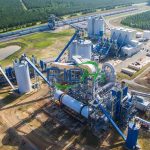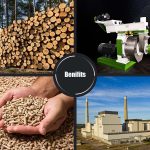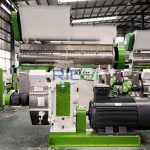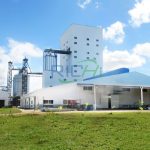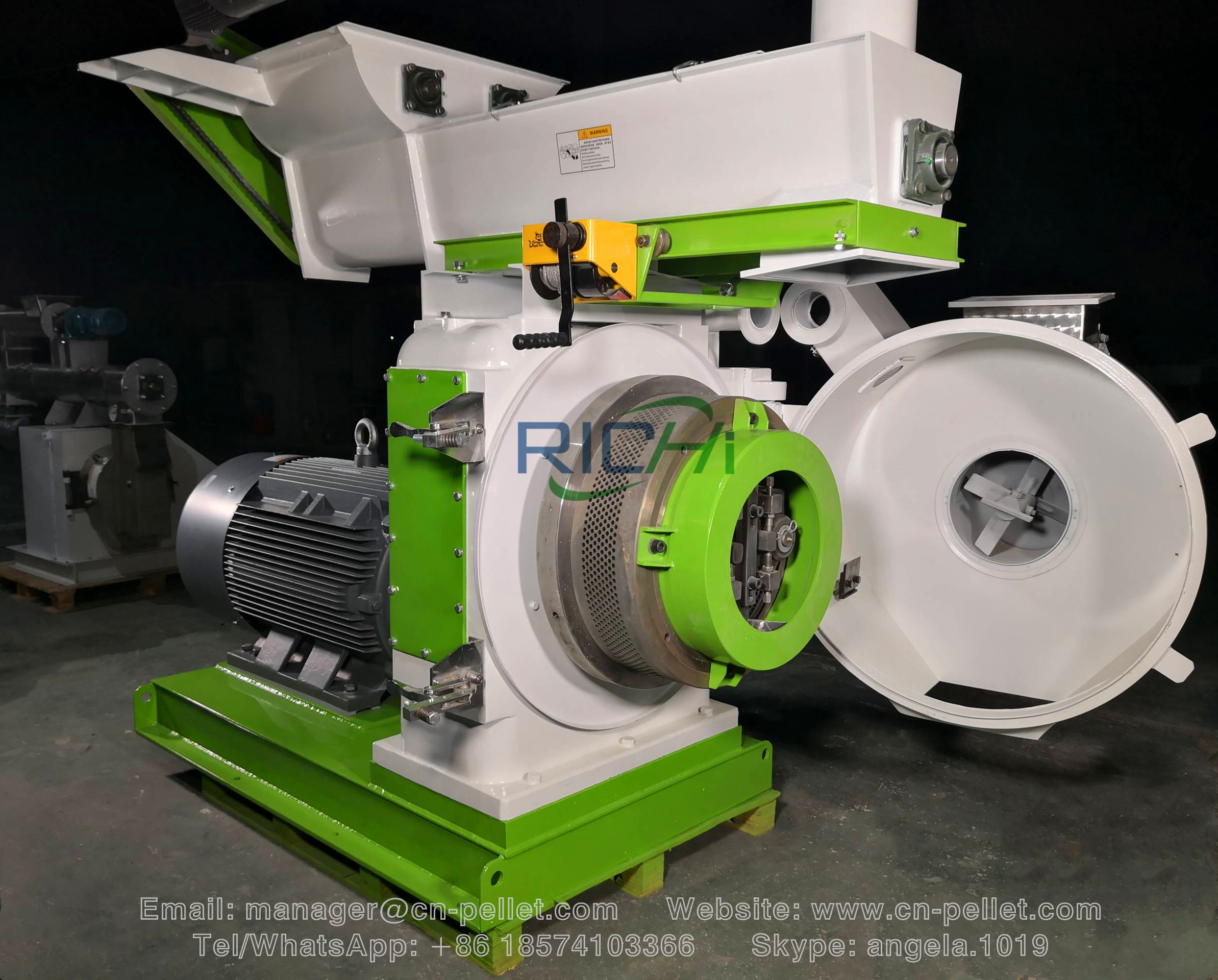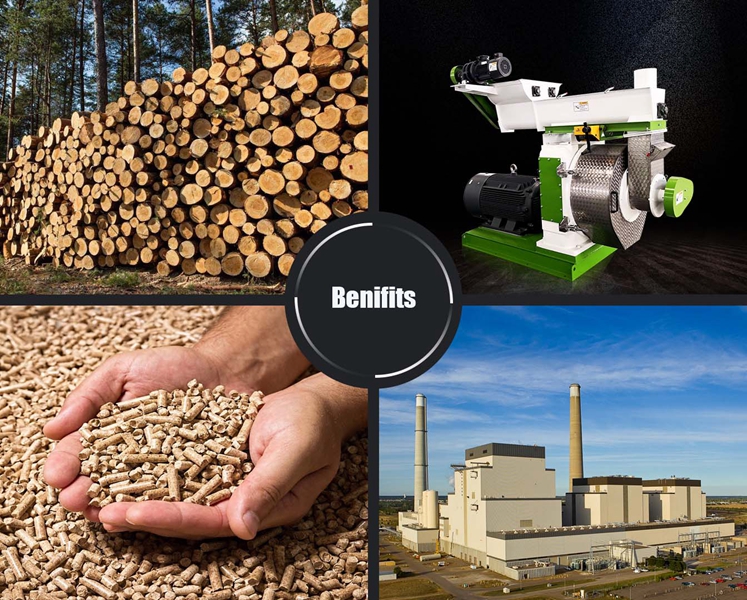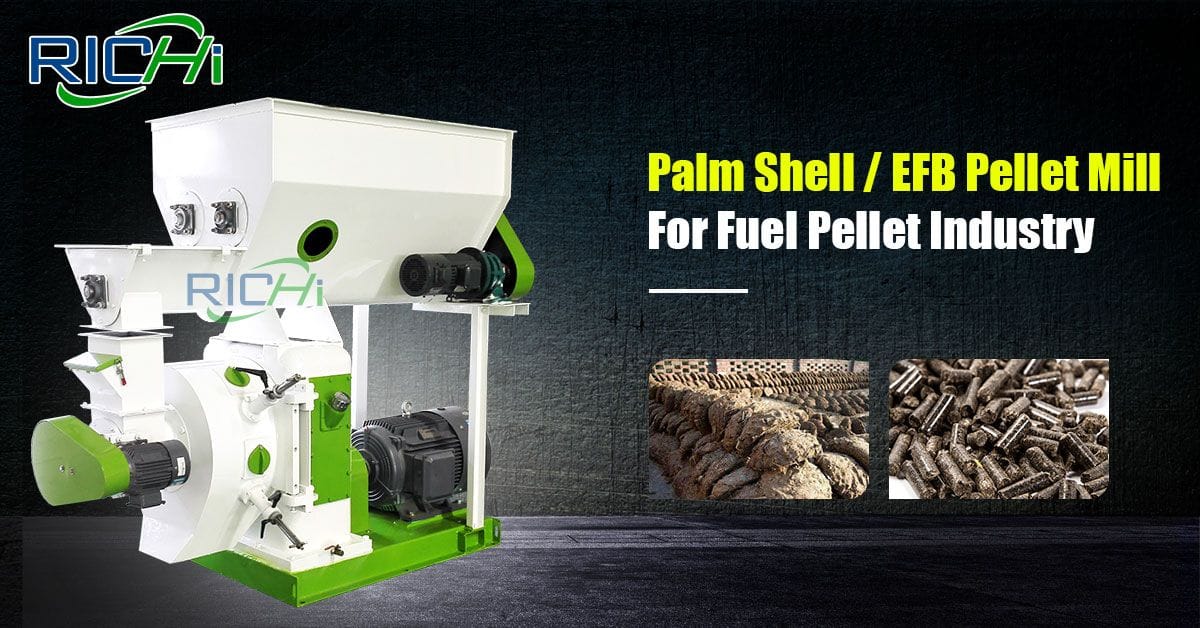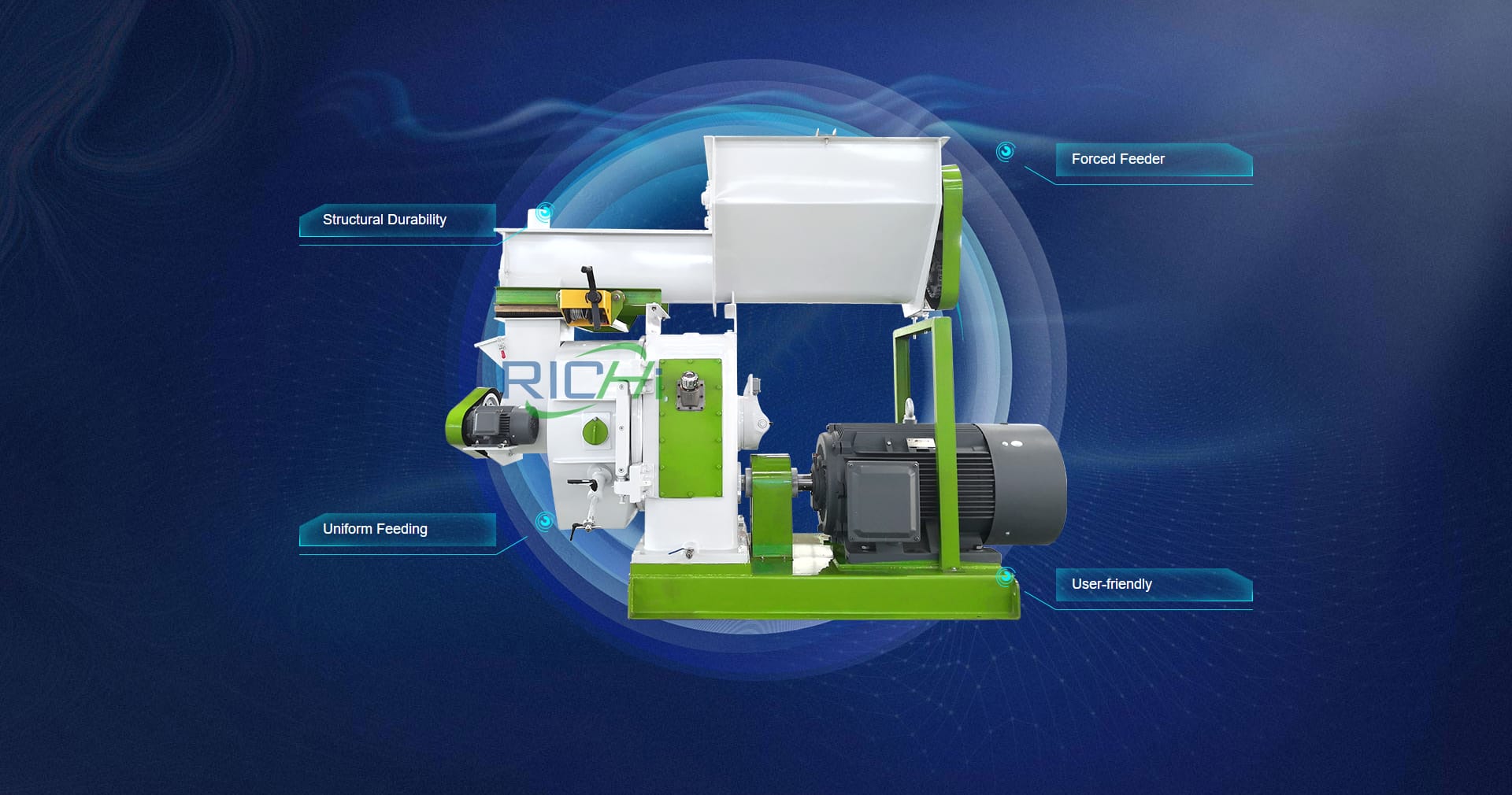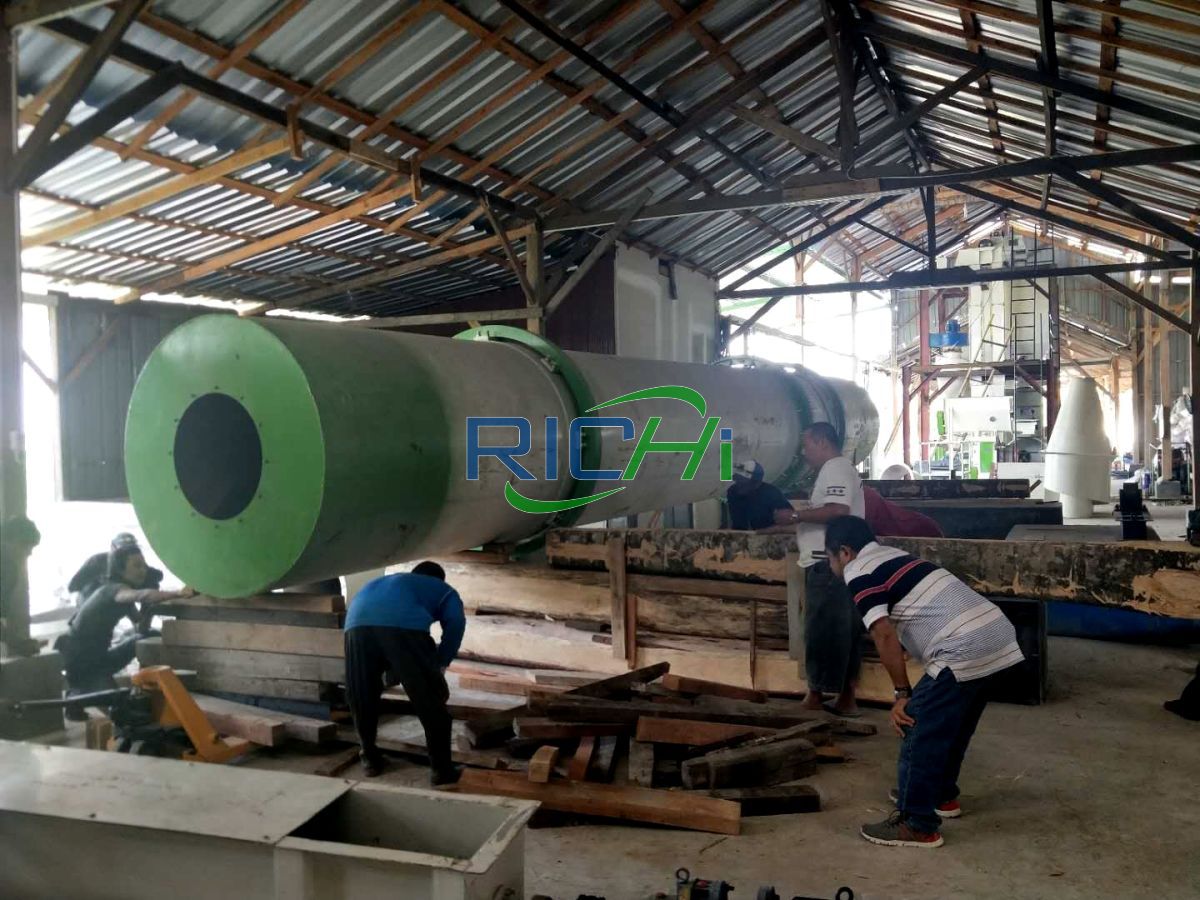How to choose a suitable compression ratio for biomass pellet mill? How is the compression ratio of the biomass fuel pellet machine calculated? The compression ratio provided by the biomass pellet mill manufacturer is generally calculated according to the specific gravity of the local material of the manufacturer. How does the customer choose the appropriate compression ratio?
1. How to choose a suitable compression ratio?
The mold compression ratio of the biomass pellet mill is determined according to the raw material, so let’s cite a few simple woods. The compression ratio of poplar is 1:6, the compression ratio of pine is 1:7, the compression ratio of hard miscellaneous wood is 1:5, the compression ratio of broken shavings is 1:5.5, and the compression ratio of corn stalk is 1:8. Judging from these simple figures, the compression ratio of different raw materials is different.
The harder the raw material, the smaller the compression ratio, and the more fluffy the raw material, the greater the compression ratio. The raw material contains a lot of fiber, and the material with a lot of fiber is easy to form.
Then let’s talk about the compression ratio of poplar wood of 1:6. What do the 1 and 6 in the numbers represent? There are 6mm, 8mm, and 10mm directly for each small hole of the biomass pellet mill of the ring die, and this 1 represents the diameter of the hole of each small hole.
If the diameter of the ring die hole is 8mm, then this 1 represents 8, and 6 represents the effective aperture. The effective aperture is equal to the diameter of the hole multiplied by the effective aperture length, that is, 6*8=48. That is, 8:48.8:48 is simplified to 1:6, and 1:6 is the compression ratio of poplar, which is converted in this way.
The quality of the biomass pellet mill depends on the compression ratio of the ring die, but if the customer The molding rate of your production of wood pellets is not very high, so you can appropriately reduce the compression ratio, which can not only increase the output, but also reduce the service life of the mold and the pressure roller. So how to choose the right mold:
First of all, on the premise of selecting a good biomass pellet mill ring die, the appropriate die hole form, opening ratio and compression ratio (compression ratio = effective length of the die hole diameter) should be selected according to the specific gravity of the production material. On the premise of ensuring the strength of the ring die, try to increase the opening rate of the ring die.
For some kinds of materials, under the condition of ensuring a reasonable compression ratio, the ring die is too thin, so that the strength of the ring die is not enough, and explosions may occur during production. At this time, the thickness of the ring die and the decompression hole should be increased under the premise of ensuring the effective length of the die hole.
The ring die compression ratio refers to the ratio of the effective length of the ring die hole to the minimum diameter of the ring die hole, which is an index reflecting the extrusion strength of wood pellets. The higher the compression ratio, the stronger the extruded wood pellets.
For the compression ratio of the biomass pellet making machine ring die of the straight hole, the effective length of the ring die hole is the total thickness of the ring die, and the minimum diameter is the diameter of the die hole itself; for the release stepped hole and the outer tapered hole.
The die the effective length of the hole is the total thickness of the ring die minus the length of the release hole or the length of the outer tapered hole, and the hole diameter of the small diameter section is the hole diameter for calculating the compression ratio; for the compressed stepped hole and the inner tapered hole, this situation is special.
Generally, the thickness of the entire ring die is used as the effective length of the die hole, and the minimum diameter is the diameter of the small diameter section. Of course, the meaning of the ring die compression ratio calculated in this way is different from the first two cases.
Roughness is also an important indicator to measure the quality of the biomass pellet mill machine ring die. Under the same compression ratio, the larger the roughness value, the greater the extrusion resistance of the wood pellets, and the more difficult it is to discharge. Excessive roughness also affects the quality of the pellet surface. A suitable roughness value should be between 0.8 and 1.6.
2. What is the necessity of developing biomass energy?

The development of biomass energy is conducive to improving the well-being and quality of life of the more than 500 million rural people across the country, promoting the combination of planting and breeding and the revitalization of rural ecology, reducing air pollution and fossil energy consumption, and promoting national energy security and low-carbon green development.
The core of the energy revolution is the transition from fossil energy to a low-carbon energy system dominated by renewable energy. Vigorously promoting biomass energy in rural areas can curb unreasonable rural energy consumption, effectively improve the energy consumption structure of rural residents, reduce pollutants and greenhouse gas emissions caused by fossil energy consumption in rural areas, and contribute to the establishment of a well-off society that meets the needs of rural areas in an all-round way.
3. The demand for biomass pellet mill increases
With the increasing price of food, the crops that were directly discarded can be reprocessed by biomass pellet mill to become the feed required for farming. In addition, sawdust and straw processed by sawdust pellet machine or straw pellet machine.
The pellets can be sent directly to power plants to replace coal and used as a new energy source. This greatly reduces costs and is recognized by more and more customers.
The three main energy sources used by human beings today are oil, natural gas and coal, all of which are non-renewable energy sources. According to experts’ predictions, if the demand for energy at the current economic development speed is met, these three energy sources that can be exploited and utilized in the earth, will be exhausted in 40 years, 60 years and 200 years respectively, the development and utilization of new energy has become an urgent issue in human development.
Since the global oil crisis occurred in the 1970s, the development and utilization of renewable energy has attracted more and more attention. Bioenergy is an important renewable energy. In the current world energy consumption, bioenergy accounts for 14% of the world’s total energy consumption, second only to In oil, natural gas and coal, it ranks 4th.
Straw wood biomass pellet mill technology is suitable for promotion and application in forest areas and agricultural areas rich in biomass resources, and can also be used to treat crop straw, wood waste from furniture factories and wood processing factories.
(1)The calorific value of straw pellets and sawdust pellets is large, the calorific value is about 3900~4800 kcal/kg, and the calorific value after carbonization is as high as 7000-8000 kcal/kg.
(2)The fuel of straw pellets and sawdust pellets has high purity and does not contain other impurities that do not generate heat. Its carbon content is 75-85%, ash content is 3-6%, water content is 1-3%, and it does not contain coal gangue. Stones and other impurities that do not generate heat but consume heat will directly reduce costs for enterprises.
(3)The fuel of straw pellets and wood pellets does not contain sulfur and phosphorus, and does not corrode the boiler, which can prolong the service life of the boiler, and the enterprise will benefit a lot.
(4)Since straw pellets and wood pellets do not contain sulfur and phosphorus, they do not produce sulfur dioxide and phosphorus pentoxide during combustion, so they will not cause acid rain, pollute the atmosphere, or pollute the environment.
(5)Straw pellets and wood pellets are clean and hygienic, easy to feed, reduce the labor intensity of workers, greatly improve the labor environment, and enterprises will reduce the cost of labor.
(6)After burning straw pellets and wood pellets, there is very little ash ballast, which greatly reduces the site for stacking coal slag and reduces the cost of slag removal.
(7)The ashes after burning straw pellets and wood pellets are high-quality organic potash fertilizers with extremely high grades, which can be recycled to generate profits.
As a new type of pellet fuel, straw pellets and wood pellets have won wide recognition for their unique advantages. Compared with traditional fuels, it not only has economic advantages but also environmental benefits, and fully meets the requirements of sustainable development.
With the promotion of environmental protection and the reduction of raw materials in many countries, biomass pellet mills, sawdust pellet machines and straw pellet machines have developed by leaps and bounds. What about the prospects of biomass pellet mills? What are the advantages? RICHI Machinery Co., Ltd. will introduce to you.
If you want to know more about small biomass pellet mill for sale Brazil, 2 ton per hour biomass pellet mill for sale Romania, biomass pellet mill for sale South Korea, CE Certificate biomass pellet mill for sale Poland, solid wood biomass pellet mill for sale USA, Europe white pine biomass pellet mill for sale Austria, stable performance pine biomass pellet mill for sale Australia, biomass pellet mill for sale Indonesia, biomass pellet mill for sale Malaysia, biomass pellet mill for sale Thailand, biomass pellet mill for sale Netherlands, please contact Richi Machinery for details.


